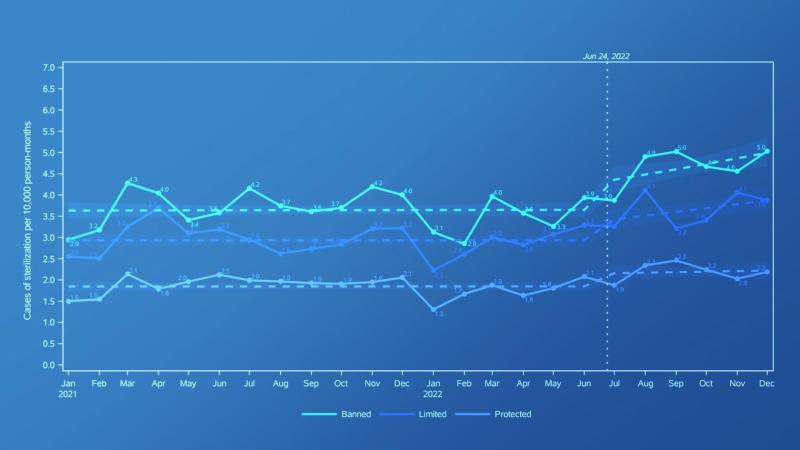
Surgical sterilisation rates among women increased in the United States after a 2022 Supreme Court ruling (Dobbs vs Jackson Women’s Health) overturned the constitutional right to abortion, found researchers at Columbia University Vagelos College of Physicians and Surgeons. The study was published September 11 in JAMA.
Surgical sterilisation – tying, cutting, or removing the fallopian tubes – is a highly effective but essentially irreversible method of preventing pregnancy.
Before the Supreme Court decision, the rate of surgical sterilisation in the United States had declined from a peak in the mid-1970s as effective reversible contraceptive methods became more accessible.
The study looked at the use of surgical sterilisation before and after the Dobbs decision among roughly 4.8 million women in 36 states and Washington, DC.
In the first month after the ruling, sterilisation rates in all states included in the study increased from stable rates in the prior year and a half.
In the six months after the ruling, surgical sterilizations continued to rise by 3% per month in states where abortion was banned after Dobbs. A similar but not statistically significant trend was seen in states that limited access to abortion after Dobbs; no further increase was seen in states that protected abortion access.
“Our study suggests that the Dobbs ruling and subsequent state laws banning or limiting access to abortion may affect a woman’s choice of contraception,” says Xiao Xu, a health outcomes researcher who led the study. “The findings also warrant attention because tubal sterilisation is an irreversible method of contraception.”

